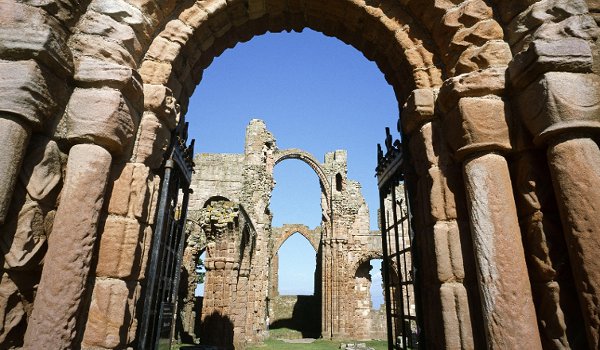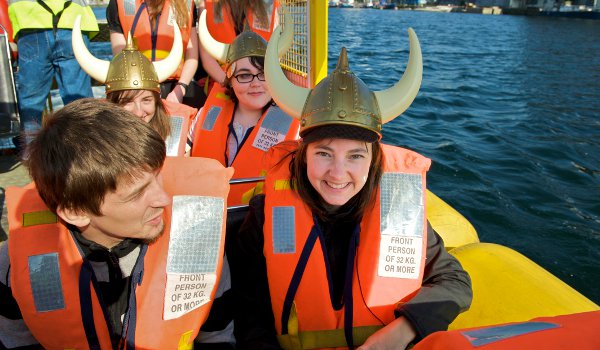NEXT month sees the 1,000th anniversary of the Battle of Clontarf, which marked an end to the Viking tyranny over most of the island, although did not totally extinguish their presence.
Today the great Viking cities and towns of Ireland — Dublin, Wexford, Waterford — bear few marks of the Vikings’ 250-year sojourn in Ireland. However, in some of these places, and in the likes of Carlingford in Co. Louth, the mediaeval street patterns follow old Viking routes.
And the Vikings did leave one unique Irish architectural structure — the round tower, that quintessential Irish building, built near monasteries to help withstand attacks from marauding Danes.
In Clontarf there is not even a visitor board or plaque to the Battle — the lack of any signage to the battleground is mainly because nobody really knows where the engagement took place. The site would in all likelihood have included all of Fairview and possibly ranged through Donnycarney as far as Glasnevin.
Dublin, which is an older settlement than most of the big Scandinavian cities, had a long history of Viking occupation. It was a Viking adventurer, Thorgisl, who gave Dublin its name (Dubh Linn — Black Pool) and two Viking brothers, Olaf the White and Ivar the Boneless, who turned the city into a major slaving centre, bringing early prosperity — not to mention misery — to the place.
Dublinia on St Michaels Hill, Christchurch (www.dublinia.ie) features a comprehensive exhibition on the Norsemen and their ways. You can see what life was like onboard a Viking warship, learn about the challenging voyages they took, their weaponry and clothes and visit a mock-up of a smoky and cramped Viking house.
 Lindisfarne
LindisfarneThe Viking Splash Tour (www.vikingsplash.com) on the other hand takes you in a World War II amphibious vehicle through water and on land. This is probably not the most academic of tours, but it’s good fun, and takes in most of the main tourist sights of Dublin, Viking or not.
At the other end of the academic scale the National Museum in Dublin (www.museum.ie) covers the Norse era with several Viking exhibits. Artefacts include everything from playthings to weaponry. There’s an impressive model of Dublin in the rare oul Danish times, and some of the first coins ever minted in Ireland are on show.
Britain too, fell under the sway of the Vikings. To further our knowledge of these extraordinary adventurers and to debunk some of the myths attached to them, the British Museum in London is presenting an exhibition Vikings: Life and Legend until June 22.
The centerpiece of the exhibition — which occupies the new Sainsbury’s Exhibition Galleries — is the massive form of Roskilde 6, a Viking longship unearthed in Denmark in 1997. The sheer scale of the craft is impressive, and you can imagine the fear in the hearts of the residents of coastal Ireland or Britain that the sighting of such a craft must have caused.
Using music, sounds, poetry, recitations, translations of historical texts, dramatic photographs of land and seascapes, film clips and artistic representations, a picture of the Vikings is wonderfully built up. A different image of this race emerges from the normal stereotype of them being the Hell’s Angels of the ancient world.
 Dublin
DublinPillagers they most certainly were, but they were also poets, builders, ornament makers, writers and inventors. They also brought the art of sailing to the point where it was possible to journey across the sea at will.
The British Museum exhibition also presents personal objects including jewellery, amulets and ornaments, which help to flesh out how the Vikings saw themselves and their world.
The Vale of York Hoard also makes up part of the British Museum exhibition. This 10th-century Viking hoard of 617 silver coins and 65 other items is one of the largest discovered in Britain. It was found undisturbed in 2007 near the town of Harrogate.
Vikings: Life and Legend is a fascinating collection of artefacts, personal effects, weapons and transport, one which paints a picture of a social, colonial and military network that left a lasting legacy in countries as far apart as Ireland and the easterly reaches of Russia.
the monastic buildings can
be visited, as well as an exhibition centre.
Jorvik Viking Centre
The Jorvik Viking Centre in York is one of the most famous and astounding discoveries of modern archaeology. Between 1976-81 archaeologists from York Archaeological Trust revealed the houses, workshops and backyards of the Viking-Age city of Jorvik as it stood nearly 1,000 years ago.
The remains are revealed beneath your feet, and objects taken from the excavations, ranging from coins to cooking utensils, are explored.
Audio-visual displays help process all the information gathered from the five-year long dig at Coppergate in York and piece together the story of the Vikings, why they came to Ireland and Britain, and how they lived and died. This truly is a fascinating exhibition.
www.jorvik-vikingcentre.co.uk
St Thomas’ Church
St Thomas’ Church, Brompton, North Yorkshire is a Grade I listed building dating from the 12th century, and is reputed to have the largest collection of Hogback sculptures in Britain.
Hogbacks are stone-carved Anglo-Scandinavian sculptures from 10th-12th century England and Scotland, and were probably grave markers. This collection of hogbacks and Viking period crosses is certainly very impressive.

